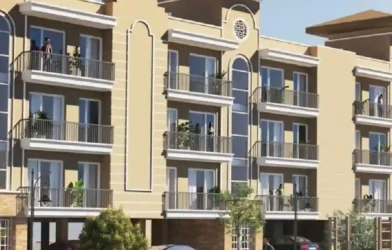Subtotal ₹0.00
The Central government’s proposal to simplify the Goods and Services Tax (GST) structure by reducing it to just two slabs—5% and 18%—is being seen as a game-changer for India’s real estate sector.
Experts say the move will lower construction costs, streamline compliance, and ultimately make housing more affordable for buyers. With high GST rates on key inputs like cement, steel, and paints currently inflating project costs, developers and homebuyers alike are hopeful that the reform will bring much-needed relief and boost momentum in the housing market.
Anshuman Magazine, chairperson & CEO (India, SE Asia, and Middle East & Africa), CBRE, said that the construction industry has been asking for quite some time that the GST rates are very high and if it can be simplified and reduced to some extent, it will definitely have a positive impact, especially from inputs like cement as chief component.
“For the commercial property segment, a GST rate cut could act as a much-needed respite at a time when looming tariffs in the range of 25–50 percent on Indian exports are already making investors cautious about putting fresh capital into warehousing and factory projects,” he said.
Magazine added that the uncertainty around global trade policies has slowed down decision-making, with many manufacturers and investors deferring large commitments until there is greater clarity.
“In such a scenario, lowering the tax burden on construction inputs can provide a significant boost and a cushion for developers and investors against volatility and help in sustaining momentum in the sector,” he said.
Currently, different GST rates are applicable on construction materials in the real estate sector. Such as 28 percent on cement, 18 percent on steel, 28 percent on paint, and 18 percent on tiles and sanitary ware. This input cost directly affects the total cost of the project and the housing price.
Prime Minister Narendra Modi in his 79th Independence Day address on August 15 had said that the government would roll out next-generation reforms to the GST by Diwali, including a major reduction in tax rates.
Pradeep Aggarwal, Founder & Chairman, Signature Global (India) Ltd said that housing sector stands to benefit from these reforms, as moving to a two-slab structure will not only make GST compliance easier for real estate developers, but also help rationalise input costs, improve cash flows and eventually reduce the cost of homes for buyers.
“Moreover, long-term clarity on tax rates will enable the real estate sector to plan projects with greater confidence and better cater to the evolving needs of homebuyers. We believe these reforms will further strengthen industry sentiment and support sustained growth in the housing market,” he said.
Subhashendra Kumar, CFO, Trehan Iris, echoed similar remarks and said the rationalisation of taxation is expected to lower overall project costs, enabling developers to offer more competitive pricing to homebuyers.
Aman Sharma, Founder and Managing Director, Aarize Group also said that by reducing tax burdens on key construction materials and simplifying compliance, it should pave the way for greater efficiency, cost optimization and benefit for homebuyers.
“As developers pass on the benefits, we can expect stronger demand, improved market stability, and a healthier growth cycle. Overall, this reform sets the stage for a more vibrant and sustainable future for India’s housing market,” he said.
Vikas Bhasin, MD, Saya Group, said that the sector anticipates that these reforms may also address a long-standing concern for homebuyers — the GST levied on under-construction properties.
Currently, buyers not only pay GST but are also subject to substantial state-level levies in the form of stamp duty and registration fees, which in many states can be as high as 8 percent of the property value.
“When combined, GST, stamp duty, and registration charges can increase the cost of a property by 13–14 percent, placing a significant financial burden on homebuyers. A reduction in GST on under-construction homes would therefore provide much-needed relief, making housing more affordable and boosting sentiment in the real estate sector. Such a move could also stimulate sales in the primary market, benefiting both developers and the broader economy,” he said.














